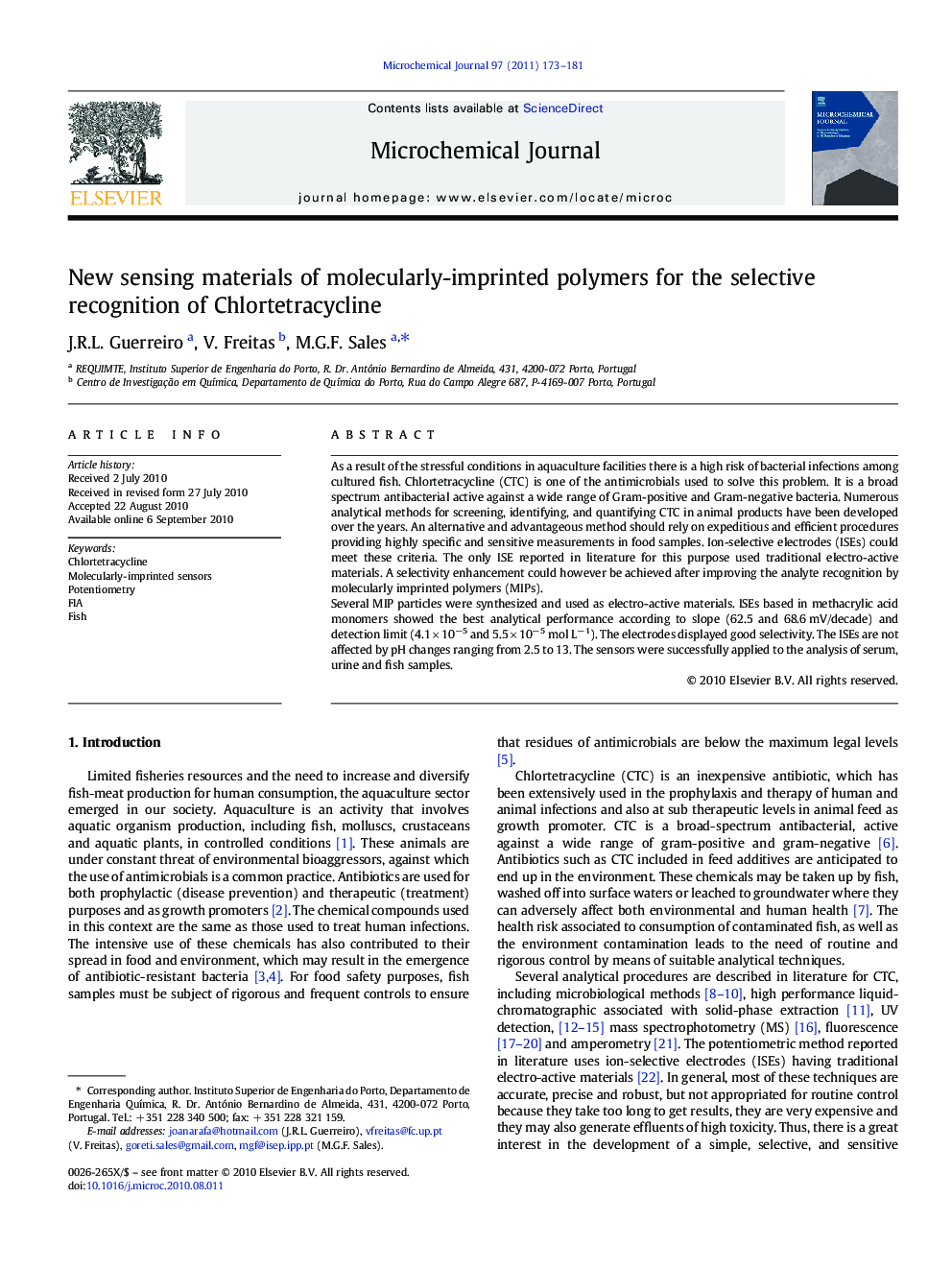| Article ID | Journal | Published Year | Pages | File Type |
|---|---|---|---|---|
| 1228131 | Microchemical Journal | 2011 | 9 Pages |
As a result of the stressful conditions in aquaculture facilities there is a high risk of bacterial infections among cultured fish. Chlortetracycline (CTC) is one of the antimicrobials used to solve this problem. It is a broad spectrum antibacterial active against a wide range of Gram-positive and Gram-negative bacteria. Numerous analytical methods for screening, identifying, and quantifying CTC in animal products have been developed over the years. An alternative and advantageous method should rely on expeditious and efficient procedures providing highly specific and sensitive measurements in food samples. Ion-selective electrodes (ISEs) could meet these criteria. The only ISE reported in literature for this purpose used traditional electro-active materials. A selectivity enhancement could however be achieved after improving the analyte recognition by molecularly imprinted polymers (MIPs).Several MIP particles were synthesized and used as electro-active materials. ISEs based in methacrylic acid monomers showed the best analytical performance according to slope (62.5 and 68.6 mV/decade) and detection limit (4.1 × 10−5 and 5.5 × 10−5 mol L−1). The electrodes displayed good selectivity. The ISEs are not affected by pH changes ranging from 2.5 to 13. The sensors were successfully applied to the analysis of serum, urine and fish samples.
